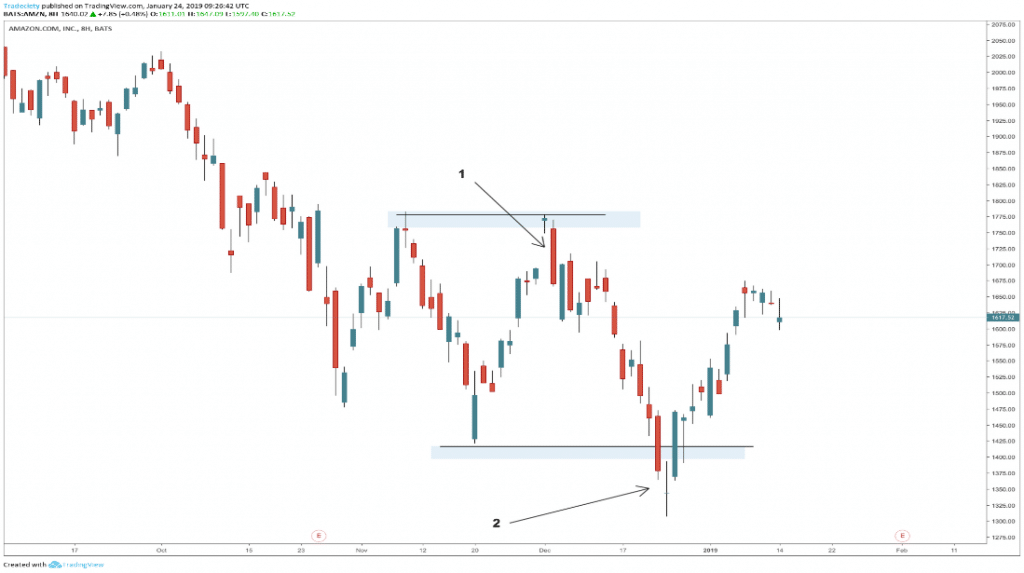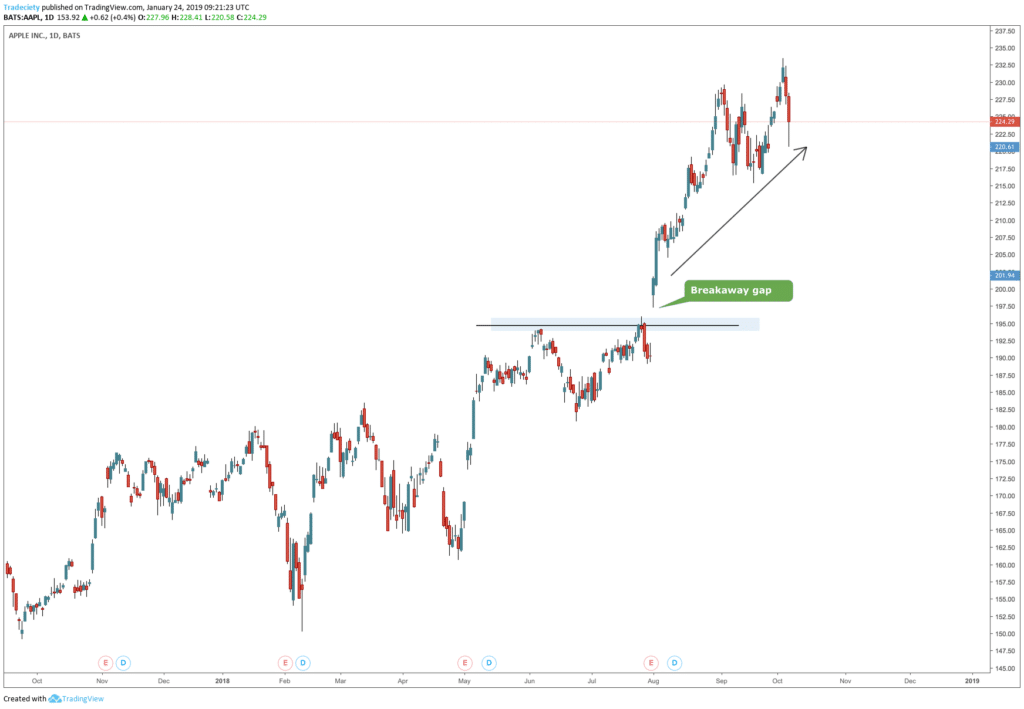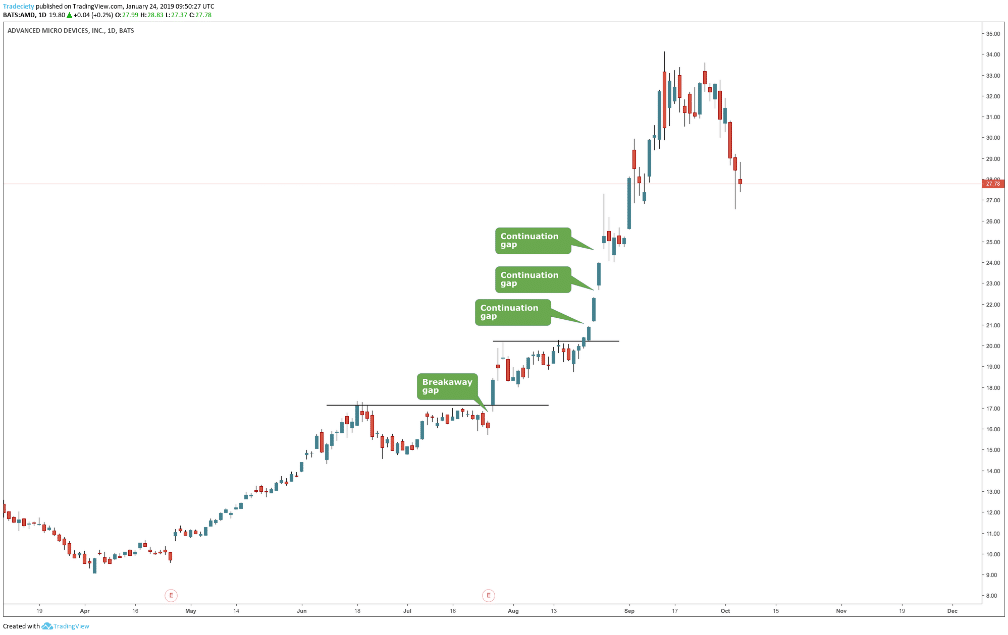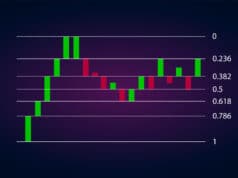Overview
Gaps in forex are just one of the many interesting phenomena that occur in the markets. As the word suggests, a gap describes an area with no activity between the closing price and opening price of a trading session. Gaps in forex are often the result of a fundamental event that transpires while a particular market is closed for public trading.
What causes gaps?
Gaps are a lot more frequent in stocks and indices since these markets are open for limited hours compared to forex, which is open 24/5 (from 5 pm EST on Sunday and to 4 pm EST on Friday). With the ‘stops and starts’ of market openings in stocks and indices, a lot of events affect their prices in between. If the markets were open for longer, these events would reflect normally on the charts. However, the gaps are ways of representing such occurrences.
Most of the noticeable gaps in forex happen over the weekend. Technically, although the market is open 24/5 to retail traders, foreign exchange happens continuously and electronically every second. Most financial institutions are closed on weekends, resulting in the retail forex market following suit.
These institutions contribute an overwhelming majority of the liquidity compared to retail traders. Virtually all forex brokers choose not to offer weekend trading (at least to the average trader) as the absence of these institutions presents very thin liquidity, which can result in erratic price movements.
During the weekends, we shouldn’t expect there to be shocking differences between Friday’s closing price and Sunday’s opening price. However, in some cases, there may be news announcements and other world events substantial enough to cause a gap when the market reopens on Sunday. The gap represents a fluctuation of price as with normal market dynamics.
During more volatile times such as high-impact news releases or at the start of a new trading session, gaps also occur. However, these gaps only show on smaller time-frames such as 15M, 5M, and 1M, barely being visible on bigger time-frames like the D1 or W1. In almost all cases, the market quickly fills these gaps.
The 4 main kinds of gaps

- Common gap (fills): No major event usually precedes a common gap, meaning that such gaps are mostly inconsequential and are just a natural circumstance of price. As a result, the market soon covers the gap. We can expect these gaps during periods of high volatility, such as high-impact news, the start of a new trading session, and the start of a new trading day.

- Exhaustion gap (fills): As the word suggests, exhaustion gaps signal some form of exhaustion in a current trend that eventually results in a reversal. Exhaustion gaps are typical in tops and bottoms where price moves swiftly into a support or resistance level, creates the gap, and soon reverses while filling the gap.

- Breakaway gap (no fill): This form of gap is very similar practically to a breakout, gapping right above a support area or below a resistance the market has been testing numerous times. Breakaway gaps produce aggressive price acceleration in the direction of the dominant trend.

- Continuation or runaway gaps (no fill): A runaway gap is comparable to a breakaway gap in that these gaps are trend continuation signals and don’t fill immediately. The only distinction is that runaway gaps don’t occur above or below a support or resistance area
What do gaps mean for traders?
Intrinsically, common gaps are purely incidental and have no significant meaning on future price movements. It’s probably for this reason that the market quickly fills common gaps. A prevalent strategy is where traders attempt to trade the gap on the basis that the market generally ‘closes’ the gap. This concept might be possible in common and exhaustion gaps, though it may not be in breakaway and continuation gaps.
The larger these gaps are, the longer the market takes to fill them. We can liken this thinking because the more a trend grows, the longer the price returns to previous highs or lows. Breakaway and runaway gaps usually confirm an existing powerful trend. There is evidence that some of these gaps have not closed for years. However, these are still exceptional cases, and predicting them is almost impossible.
From a risk perspective, there are ongoing debates over the safety for traders to leave their trades running over the weekend for fear of gaps. This idea solely depends on the type of trader one is. Day traders are probably likelier not to leave positions running over the weekend as there could be tiny, insignificant gaps on smaller time-frames. As already stated, significant gaps in forex are rare compared to stocks. Longer-term traders shouldn’t worry about gaps as even the most inconsequential ones have no real bearing on their trades.
Conclusion
We can summarise gaps in forex by either those that form incidentally and those that continue a trend. The former is the cause of most gaps in the markets. Nonetheless, gaps overall are seldom in forex and shouldn’t be anticipated regularly.




